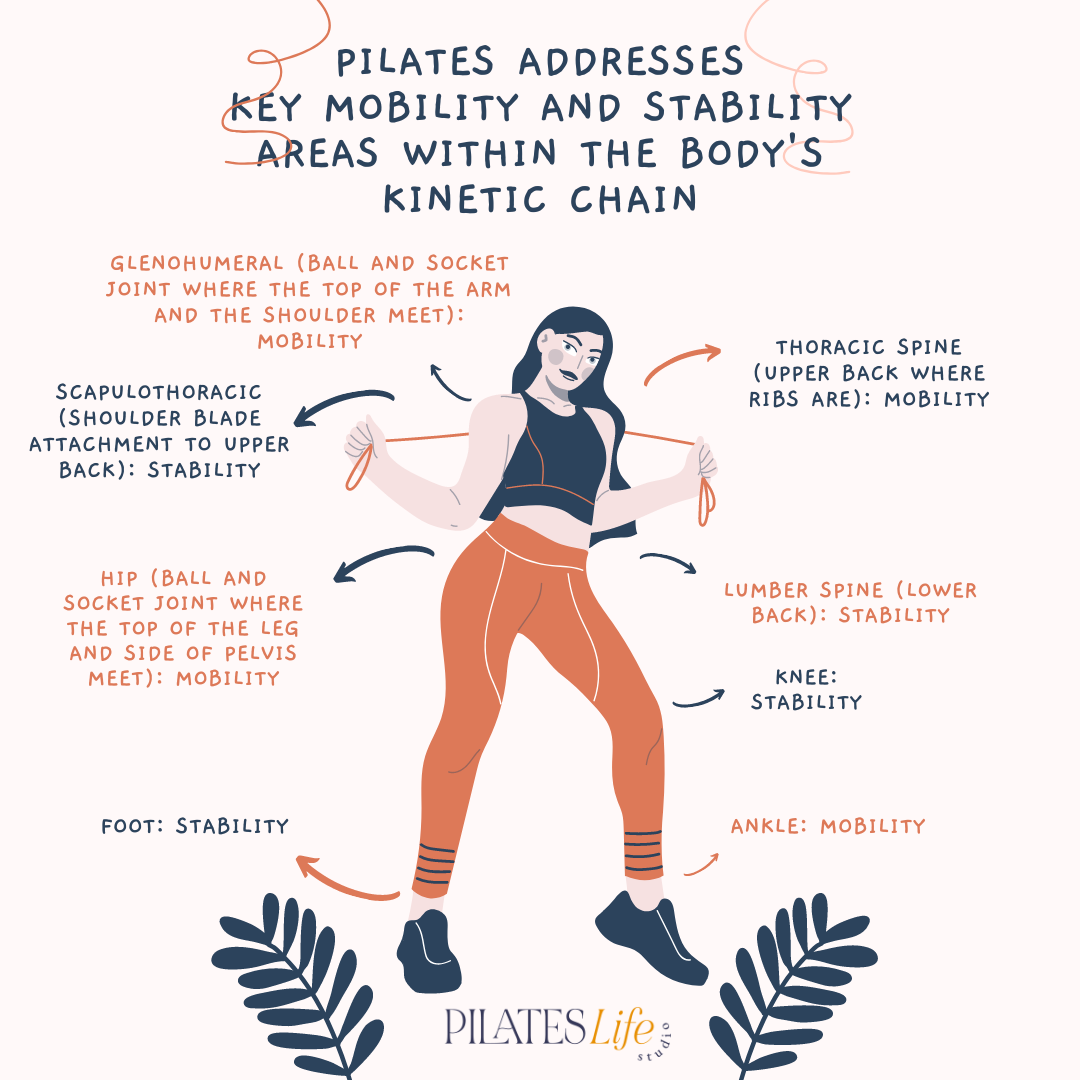The Importance of Exercise Recovery
Exercise recovery is more than just resting after a challenging workout or sports event. We need appropriate recovery strategies not just after participating in a big race, but also after a long day of gardening or after heavy lifting from cleaning out the garage. Really this applies to any activity that is beyond our usual physical routines. Slight soreness or discomfort is normal 24 hours after, but sometimes too much discomfort or pain in one area of the body could indicate an imbalance.
In the article below I go over a few important practices that can help increase your body’s ability to recover from challenging activities by creating balance within the body.
Within the body there is a constant play of stability and mobility. Certain areas of our body function best when strong and stable and other parts of the body function best with more range of motion.
The American Council on Exercise (ACE) Personal Trainer manual (5th Edition) has a helpful list locating key mobility and stability areas within the body’s kinetic chain:
Glenohumeral (ball and socket joint where the top of the arm and the shoulder meet): mobility
Scapulothoracic (shoulder blade attachment to upper back): stability
Thoracic spine (upper back where ribs are): mobility
Lumber spine (lower back): stability
Hip (ball and socket joint where the top of the leg and side of pelvis meet): mobility
Knee: stability
Ankle: mobility
Foot: stability
If you have ever taken one of my classes, I often talk about these above areas within the body. Several examples:
Footwork on the reformer or low chair strengthens the feet, providing much needed stability.
The spine corrector/step barrel supports the spine while extending, increasing mobility within the thoracic spine.
Leg circles on the tower develop full body strength, while providing increased range of motion of the hips.
We can become injured and/or develop chronic pain when one of the areas in the kinetic chain functions incorrectly. For example: if we have tight hips sometimes our knees (which should be stable) overcompensate and become torqued incorrectly, which over time can cause dysfunction and pain at the knee joint.
The BEST way to create balance within the body? Get stronger!
Resistance training on the Pilates apparatus (reformer, chair, and tower system) provide a spring based load that strengthens thus building stability, and dynamically stretches which helps increase mobility. The key is consistently strengthening the body several times per week to gradually progress strength and range of motion within the body one workout at a time.
Six helpful steps to create balance within the body after intense activity:
1. Step one: have a strength program that creates balance and correct alignment within the body so you can move optimally. Can be done on the Pilates apparatus or with regular weight training. Twice a week minimum, three times a week preferred. Each participant may have different needs depending on their unique habitual movement patterns. A certified personal trainer, kinesiologist, and/or certified Pilates instructor can create a functional strength program. Not all certifications are equal, check their credentials. Sometimes a registered physiotherapist is needed to diagnose specific issues.
2. Step two: dynamically stretch tight areas of the body. We need to lengthen shortened, overworked muscles so joints have a healthy range of motion so the areas of the body that need to be more stable don’t become compromised. Gentle yoga or yin yoga are good therapeutic choices for prolonged stretching. Mat Pilates provides appropriate range of motion exercises. Additionally, Pilates apparatus exercises provide strengthening and lengthening movements that can help build a balanced body.
3. Step three: loosen overactive sore or painful areas in the muscle that may have “knots” or “trigger points” by foam rolling or using massage balls. Below this article, I provide a quick 7 minute foam rolling sequence video for you to add to your recovery routine. Going to a registered massage therapist on a regular basis can also provide relief.
4. Step four: de-stress by practicing relaxation techniques, like walking in nature, reading, mediation, prayer, yoga, or lighter exercise on recovery days.
5. Step five: eat for recovery. Healthy foods fuel the body when active and also when recovering after exercise. I have numerous articles on this blog that focus on nutrition (hint: eat more protein, fruit, and veggies, limit alcohol).
6. Step six: get enough sleep. Studies demonstrate that having a bedtime routine is crucial to getting a good night sleep. Making sure we prioritize sleeping for an appropriate number of hours helps with exercise recovery.
Each week I explored these steps in more detail. Check out the appropriate blog articles for more info.
References:
Bryant, C. X., Newton-Merrill, S., Green, D. J., & American Council on Exercise (Eds.). (2014). ACE personal trainer manual (Fifth edition). American Council on Exercise.
Quick 7 min Foam Rolling Sequence You Can Do When Feeling Tight or Sore
Originally written Jun 28, 2020

